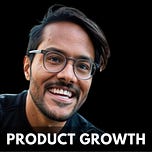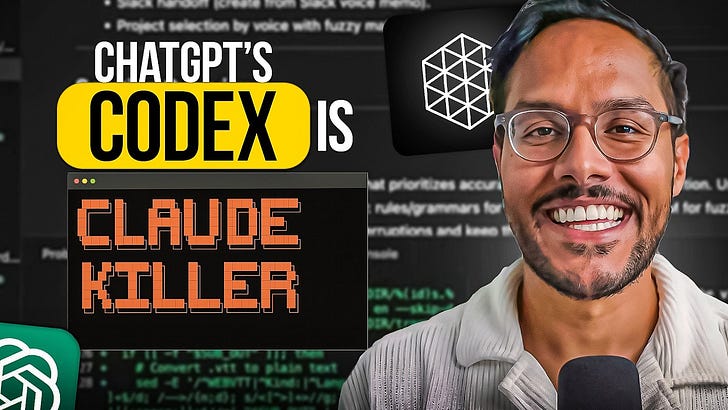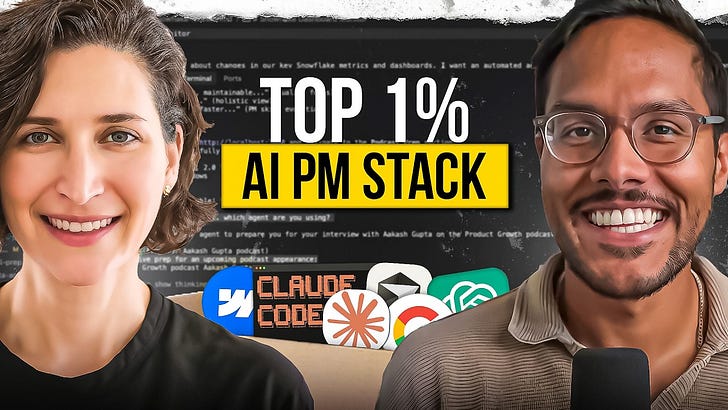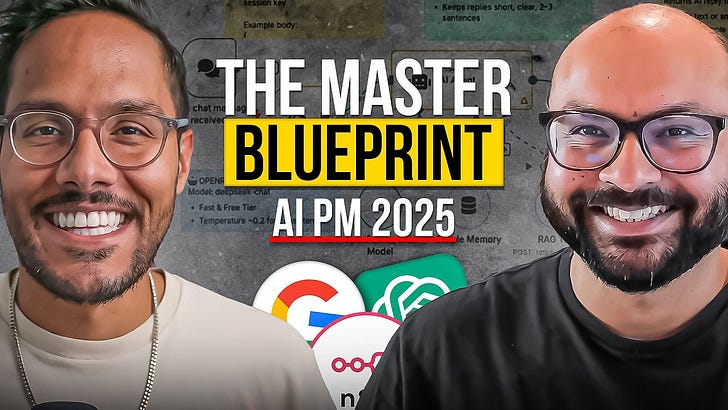Listen now on Apple, Spotify, or YouTube.
And check out our awesome sponsors:
Vanta: The best tool to automate compliance, manage risk, and prove trust
Maven: You can get Marily’s course with $100 off using my link
Today’s Episode
Marily Nika has already contributed to this Newsletter, and you all loved it: How to become an AI Product Manager.
So she’s back!
If becoming - or succeeding as an AI PM - is a goal for you, this podcast is for you:
How AI PM Roles Differ at Big Tech Companies – 00:06:56
Interviewing for AI PM Roles at Big Tech Companies – 00:22:08
Transitioning into AI Product Management – 00:40:52
How PMs Can Stay Relevant in an AI-Driven World – 01:08:12
LinkedIn Tips for Aspiring AI PM Creators – 01:21:21
Here are the Key Takeaways
1. The Two AI PM Roles No One Talks About — Which One Are You?
Most people think AI product managers are just "tech-savvy PMs."
They get it wrong…
You don’t have to be an AI engineer to be an AI PM.
The only thing you need is to be AI-enhanced or what I call AI-powered PM.
AI PM roles can be categorized as follows:
AI Builder PMs – They work closely with researchers to train, test, and improve AI models.
AI Experience PMs – They take those models and turn them into real-world applications that users actually interact with.
If you’re thinking about AI PM, ask yourself:
Do you want to build AI, or do you want to build with AI?
2. This Is What Most Successful AI PMs Do
Successful AI PMs don’t only focus on features…
They also focus on aligning the missing piece of the puzzle — “product strategy” with “execution.”
To get it right, follow these principles:
Start with the mission – Focus on the problem first and AI second.
Understand the competitive landscape – Devise a strategy to stay ahead.
Decide: Build or Buy? – Developing an AI model in-house takes time, so it’s good to integrate some existing AI solutions.
Ensure technical readiness – Prioritize data quality, infrastructure, and continuous model improvements.
Those who master AI strategy don’t just ship features; they shape the future of their product.
3. The AI PM Skills That Matter More Than Coding
Want to know the fastest way to fail as an AI PM?
Walk into a meeting with a research team and say, "I have an idea! Can you build it?"
Here’s what the best AI PMs do differently:
They master technical influence – Engineers respect PMs who bring structure, clarity, and product thinking to AI.
They know AI’s unique challenges – AI is probabilistic, not deterministic; results will never be perfect.
Speak their language – Ask precise questions like;
“What’s our model’s precision and recall?
“Do we need more training data?”They never pitch an AI feature without conviction.
If you’re suggesting something, back it up with data, research, or a proven use case.
4. The "Shiny Object" Trap: Why Most AI Features Fail
AI is the hottest trend in product management…
But that’s also the problem.
Many companies fall into the trap of "shiny object syndrome" and use AI for the sake of hype.
A simple decision framework to use AI includes:
Start with user pain points – If AI isn’t solving a real problem, don’t use it.
Define a Minimum Viable Quality (MVQ) – AI doesn’t have to be perfect to launch — it just has to be good enough to gather feedback.
Don’t use AI if simpler solutions work – If a simple algorithm or workflow solves the problem, AI is overkill.
Instead of investing months training a model, start by hardcoding the experience.
If users love it, then invest in AI.
5. The Smartest Way to Land an AI PM Role
No one is going to hand you an AI PM job.
You have to make yourself impossible to ignore.
Here’s how to stand out:
Embrace uncertainty by adapting to evolving models and changing data.
Build something of your own — something to showcase your expertise. It doesn’t have to be a fully planned product.
Build a strong online presence so hiring managers can find you easily.
Don’t just apply — get referrals through cold emails, networking, and personal connections.
Treat interviews like a performance and practice until your answers flow naturally.
References
Tools:
NoteBookLM — Research assistant designed for summarizing large knowledge bases
Product Sense GPT — Her interview prep tool to help candidates refine their AI PM interview
AI-powered PRD Generator — Help to structure PRDs by automating content organization and improving clarity.
Platform: DevPost — A platform where PMs can collaborate with engineers and build AI prototypes
Newsletter: TLDR Newsletter – Provides short and digestible summaries of tech news
Where to find Marily
If you prefer to only get newsletter emails, unsubscribe from podcast emails here.
Email productgrowthppp at gmail for advertising opportunities.
Up Next
We have some great podcasts coming from Abhishek Viswanathan (2x Former CPO: Qualtrics, Apollo.io) and Marty Cagan (The legend himself). I’m excited to share them.
In the newsletter, check out the latest piece if you haven’t yet: How Jira Product Discovery Grows.
And look out for these pieces up next:
Candidate-Market Fit: The Advanced Guide for PMs
Rock the Product Design Interview
How to Scale the Impact of Your Experimentation Program
Cheers,
Aakash













